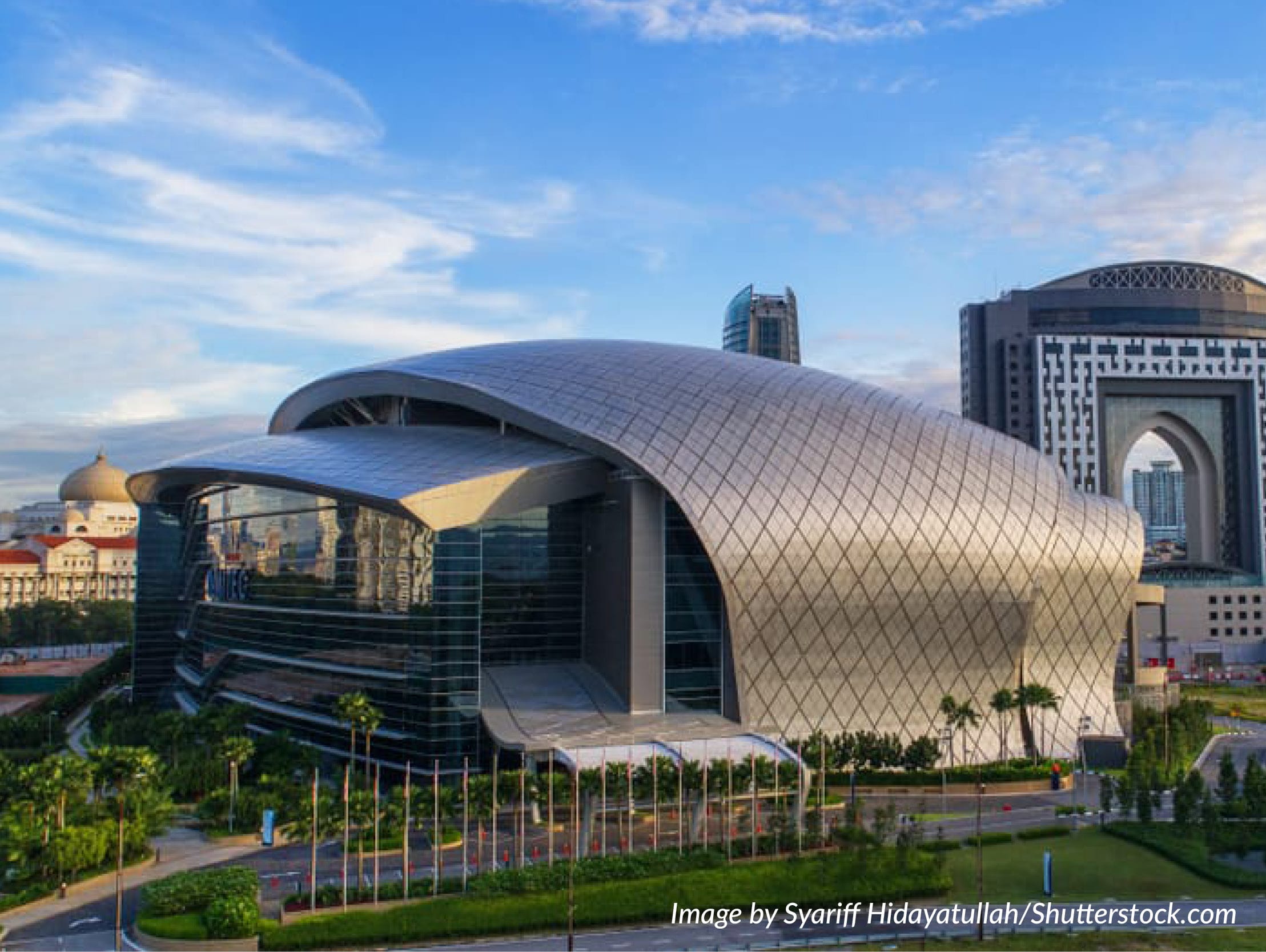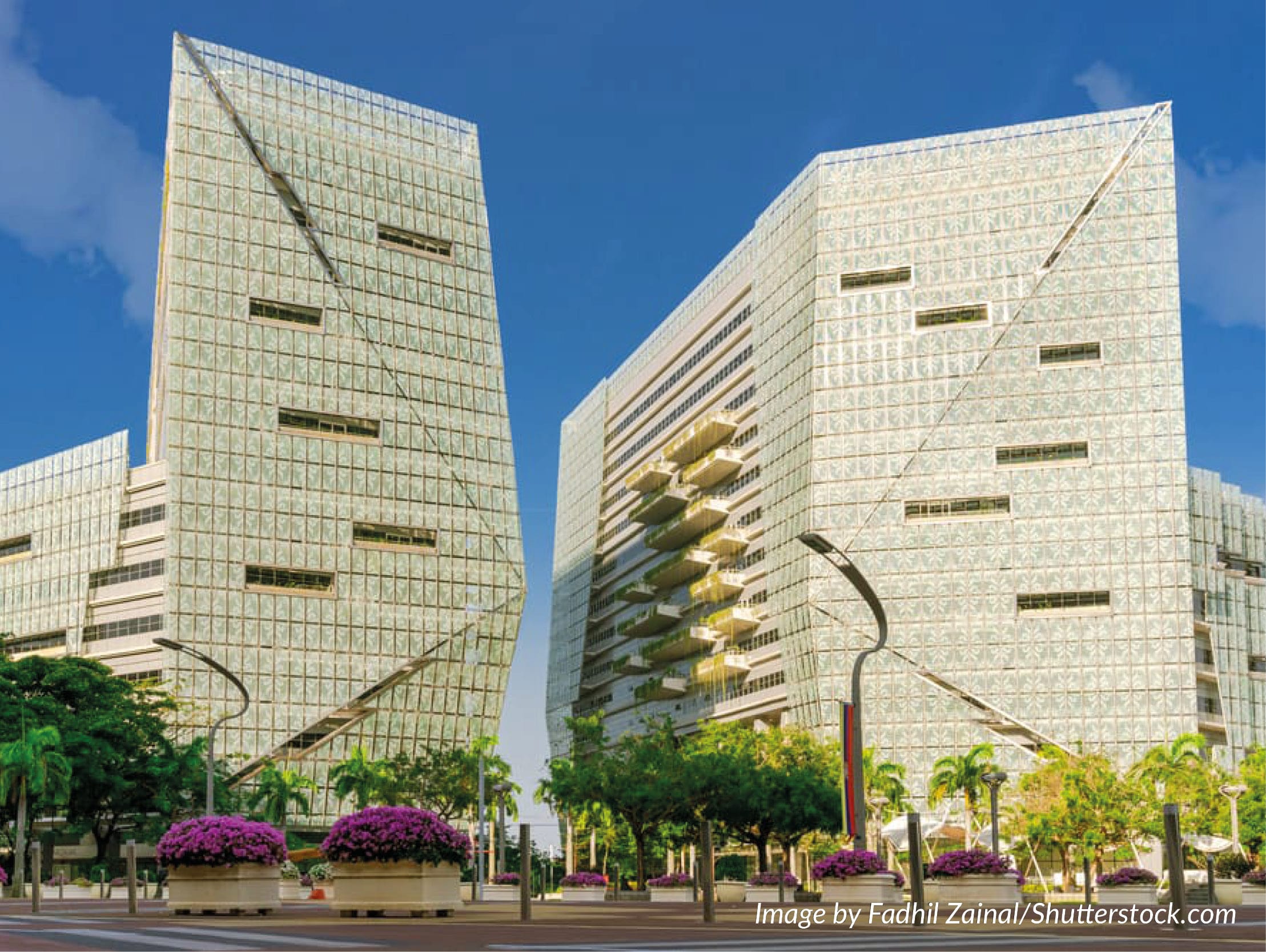GreenRE is a Green building accreditation body in Malaysia that works closely with the Ministry of Works Malaysia to promote sustainable projects. To gain a better understanding of the big-picture role that the NGO plays in accrediting local Green buildings and advocating sustainability in Malaysia’s built environment, BCI Central Malaysia’s Frank Chow, National Research Manager, and Jason Au, Senior Business Development Manager, spoke with Ir Ashwin, Executive Director of GreenRE.
Since its establishment in 2013, GreenRE has been promoting and raising the awareness of Green and sustainable building to the public and business owners. Are there any new criteria the organisation is still evaluating or that which are still in development stage?
GreenRE focuses on 1) energy efficiency; 2) water efficiency; 3) environmental protection; 4) indoor environmental quality; 5) carbon footprint of development; and 6) other Green features. These are the six pillars of sustainability we use when assessing a project. GreenRE is aligned to Singapore Building Construction Authority’s Green Mark, which is an internationally recognised, tropical Green building certification system. We aim to offer an affordable science-based approach to Green building development with a focus on the low-hanging fruit, high-impact aspects, such as energy efficiency and low-carbon materials. In subsequent updates, we aim to heighten our focus on carbon impact assessment and correlate certification parameters to global carbon disclosure metrics.
Is there any way GreenRE will factor in criteria such as climate change and viral diseases precaution in current Green building design? This seems to be the global phenomena to set such metrics against.
Climate change is the central focus of our certification and we strive to push the Malaysian built environment towards a net-zero carbon emissions target by 2050. The COVID-19 pandemic has also heightened our focus on indoor environmental quality. Airborne transmission can be reduced through proper building layout design and occupancy planning. Incorporating natural ventilation and designing HVAC systems to provide adequate fresh air will help to dilute the viral particles and reduce the likelihood of viral transmission. As part of GreenRE certification for existing buildings and projects undertaking renewal, an indoor air quality audit is mandatory to ensure compliance to DOSH IAQ guidelines.

How do you see the Green building market in Malaysia and its potential growth in the coming two to three years?
There will certainly be growth in the Green building certification space. There is now an increased top-down push from the government to all sectors in order to achieve nationally committed carbon reduction targets. As part of the National Low Carbon Cities Masterplan (NLCCM), 33 cities have been identified to achieve a net-zero target in the built environment between 2055 and 2060. Several local authorities such as DBKL and MBPJ have already implemented Green building requirements in planning permission for new projects. Bank Negara has also released a climate change taxonomy to guide banks in classifying their lending based on sustainability criteria. Several Malaysian banks have already included Green building criteria as part of their project financing assessment process and are also offering end-financing incentives for purchasers of Green certified property.
Impedance for Green buildings may be based on misconceptions that it is very expensive. Going Green is very affordable as the small additional capital expenditure for energy-efficient equipment will result in lower operating cost and payback within two to three years. Further, more demand for energy-efficient equipment will lower their cost in the long run through economies of scale. In fact, GreenRE rewards buildings designed to enhance natural ventilation that will reduce the need for air-conditioning. This will actually lower the upfront cost for buyers!
How do you see the need of the many Green rating tools in our country—do you think there is a healthy equilibrium in promoting a Greener future or is the opposite?
Yes, we believe there is a healthy equilibrium as Green building certification is a voluntary requirement in Malaysia. GreenRE and Green Building Index are the most popular local certification bodies for private sector projects. MyCREST and PHJKR are used primarily for government projects. GreenRE will continue to focus on the needs of building owners and users to address the most pertinent issues to alleviate the impacts of climate change. Third-party certification is important to prevent greenwashing. We are also ISO: 9001 certified to ensure the quality of our operations and assessment process.
World Green Building Council (WGBC) only recognises one Green rating tool per country—why do they set this rule and will that cause other Green rating tools to be less credible?
This is not a correct statement. In fact, WGBC encourages more rating tools to tackle the diverse range of building types and leaves it to local Green building councils to decide on their endorsement structure. In 2015, WGBC released a Quality Assurance Guide for Green Building Rating Tools for bodies not endorsed by local councils for which GreenRE is fully aligned. WGBC operates as a non-profit organisation that advocates rather than administers Green building certification.
In Malaysia, recognition by the Ministry of Environment and Water is most important through the Malaysia Green Technology and Climate Change Centre (MGTC) for which GreenRE is a recognised verification partner for Green building certification.
Do we have Green Commercial Building Insurance in Malaysia? Does the Green insurance concept work like conventional insurance but specifically covering Geen buildings?
We have not come across any such products in Malaysia. This may be partly due to the low number of completed Green buildings in Malaysia. As per NAPIC statistics, Green certified buildings currently encompass less than 1 per cent of the building stock in Malaysia.
Green building insurance takes into consideration components of the project that are related to Green building criteria such as energy efficiency, water efficiency, renewable energy, sustainable products, etc. In the event that the insurance is exercised due to damage to the building, this coverage will cover all costs to restore the Green building components, including the cost of recertification.

How do we encourage more Green products from local manufacturers? Is there a movement or initiative from government bodies e.g., CIDB, SIRIM or organisations like REHDA to ensure the Green movement benefits local firms?
There are several local Green product certification bodies both by the government and the private sector. MGTCadministers the MyHijau mark certification, where products listed in this database are also eligible for tax incentives by MIDA. SIRIM has a third-party eco-labelling service in accordance to ISO criteria. In the private sector, Malaysia GBC operates the GreenPages directory where vendors with suitable third-party eco-labelling can apply for listing. Third-party verification of a product’s Green credentials are important to prevent greenwashing. One of the components that GreenRE and MyCrest criteria share are the sustainability initiatives by REHDA and CIDB respectively, which include sustainable products for which a valid certification is required to score points.
What are GreenRE’s plans or strategies coming up next to continue promoting and raising awareness of sustainable and low-carbon emission to the industries in Malaysia?
GreenRE will continue to work with all levels of stakeholders to synergise efforts and break down silos that are preventing a wider adoption of Green buildings. The carrot-and-stick approach has to be finely balanced. We want to ensure a win-win for all parties and eliminate the misconception that going Green is unaffordable. We look forward to a Greener future in Malaysia. – Construction+ Online

 Hong Kong
Hong Kong Singapore
Singapore Indonesia
Indonesia Tiếng Việt
Tiếng Việt ประเทศไทย
ประเทศไทย









